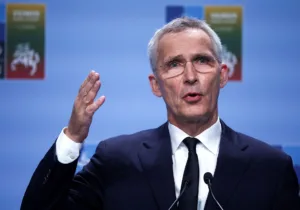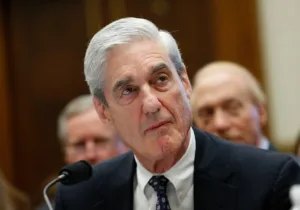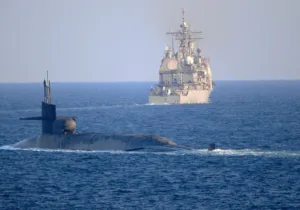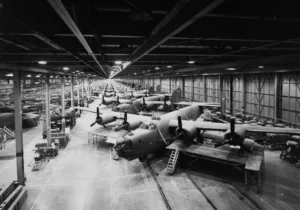In an attempt to cut his agency’s budget, Secretary of State Rex Tillerson is expected to cut 2,300 U.S. diplomats and civil servants—about 9 percent of the Americans in its workforce worldwide. According to BloombergPolitics, the majority of the job cuts, about 1,700, will come through attrition, while the remaining 600 will be done via buyouts. These personnel cuts may be phased in over the next two years.
“I know change like this is really stressful for a lot of people, there is nothing easy about this and I don’t want to diminish the challenges this presents,” Sec. Tillerson told State Department employees on Wednesday. “I can promise you that once this is all done you are going to have a much more satisfying fulfilling career.”
Here is what you should know about the roles, mission, and organization of the U.S. State Department:
1. The State Department is the lead foreign affairs agency, representing the United States at more than 270 diplomatic locations around the world, including embassies, consulates, and missions to international organizations. The department includesthe Foreign Service corps (13,000 employees), a civil service branch (11,000 employees), and more than 45,000 locally employed Foreign Service staff at overseas posts. The department’s budget is $20,669,989,000(FY 2017).
2. The State Department’s stated mission is “to shape and sustain a peaceful, prosperous, just, and democratic world and foster conditions for stability and progress for the benefit of the American people and people everywhere.” This mission is shared with the United States Agency for International Development, “ensuring we have a common path forward in partnership as we invest in the shared security and prosperity that will ultimately better prepare us for the challenges of tomorrow.”
3. The Secretary of State is the highest-ranking member of the Cabinet and the third-highest official of the executive branch of the federal government, after the President and Vice President. The Secretary of State is also fourth in line to succeed the presidency. Among the duties of the office, the Secretary serves as the President’s principal adviser on U.S. foreign policy, conducts negotiations relating to U.S. foreign affairs, and personally participates in or directs U.S. representatives to international conferences, organizations, and agencies.
4. The department consists primarily of Foreign Service Officers (generalists) and Specialists (who provide technical, management, healthcare, or administrative services) that can be sent to any embassy, consulate, or diplomatic mission in the world at any time, including locations throughout the United States. Civil Service employees largely remain in Washington, D.C. or other domestic locations while Foreign Service National employees (often referred to as Locally Engaged Staff, LES) are citizens of the countries in which the department maintains diplomatic posts and consulates.
5. Leaders within the State Department (such as ambassadors) consist of both career Foreign Service Officers (FSOs) and non-career (political appointees). Since the Kennedy administration, says Marc Grossman, the percentage of career to noncareer appointees has been two-thirds career and one-third political.
6. Throughout most of the world, the public face of the State Department is the Bureau of Consular Affairs (CA). CA is responsible for the welfare and protection of U.S. citizens abroad, for the issuance of passports and other documentation to citizens and nationals, and for the protection of U.S. border security and the facilitation of legitimate travel to the United States. Within the U.S., CA has 29 U.S. Passport agencies and centers, 26 of which deal directly with the public. CA is the State’s largest bureau in terms of domestic personnel and is almost entirely funded through revenue generated by consular fees. This revenue totaled $4.16 billion in 2015.
7. Three bureaus—the Bureau of Arms Control, Verification and Compliance; the Bureau of International Security and Nonproliferation; and the Bureau of Political-Military Affairs—contribute to the State Department’s strategic goal of countering threats to the United States and the international order. The roles of these bureaus includes overseeing the negotiation, implementation, and verification of international agreements in arms control and international security as well as directing and coordinating export control policies and policies to prevent missile, nuclear, chemical, biological, and conventional weapons proliferation.
8. Seven bureaus and offices advance the security of the American people by assisting countries around the world to build more democratic, secure, stable, and just societies. Those are the Bureau of Conflict and Stabilization Operations (CSO), the Bureau of Counterterrorism and Countering Violent Extremism (CT/CVE), the Bureau of Democracy, Human Rights, and Labor (DRL), the Bureau of International Narcotics and Law Enforcement Affairs (INL), the Bureau of Population, Refugees, and Migration (PRM), the Office of Global Criminal Justice (GCJ), and the Office to Monitor and Combat Trafficking in Persons (TIP).
9. Five bureaus and offices develop and implement international policies related to economic growth, energy, agriculture, the ocean, the environment, and science and technology. Those are the Bureau of Economic and Business Affairs, the Bureau of Energy Resources, the Bureau of Oceans and International Environmental and Scientific Affairs, the Office of the Chief Economist, and the Office of the Science & Technology Adviser.
10. The State Department operates its own air wing—176 active aircraft, including approximately 137 helicopters—through the Bureau for International Narcotics and Law Enforcement Affairs’ Office of Aviation (INL Air Wing). The INL Air Wing was established within the State Department in the 1980s for the purpose of conducting aerial eradication and interdiction operations in drug-producing countries under bilateral agreements. The Air Wing also supports U.S embassies in high threat areas with passenger and cargo movements where commercial aviation is not secure. The headquarters of the State Department Air Wing (officially the Office of Aviation) is located at Patrick Air Force Base, Florida. The Air Wing currently conducts operations in Afghanistan, Colombia, Iraq, Pakistan, and Peru.
—
Joe Carter is an adjunct professor of journalism at Patrick Henry College, an editor for several organizations, and the author of the NIV Lifehacks Bible.
Photo Credit: U.S. Secretary of State Rex Tillerson attends a Ministerial Working Luncheon of the Global Coalition Working to Defeat ISIS at the U.S. Department of State in Washington, D.C. on March 22, 2017. [State Department Photo/ Public Domain]






